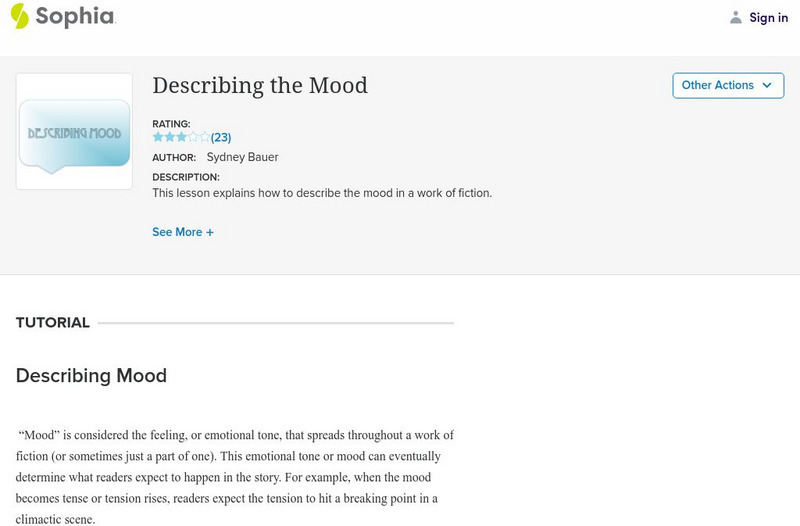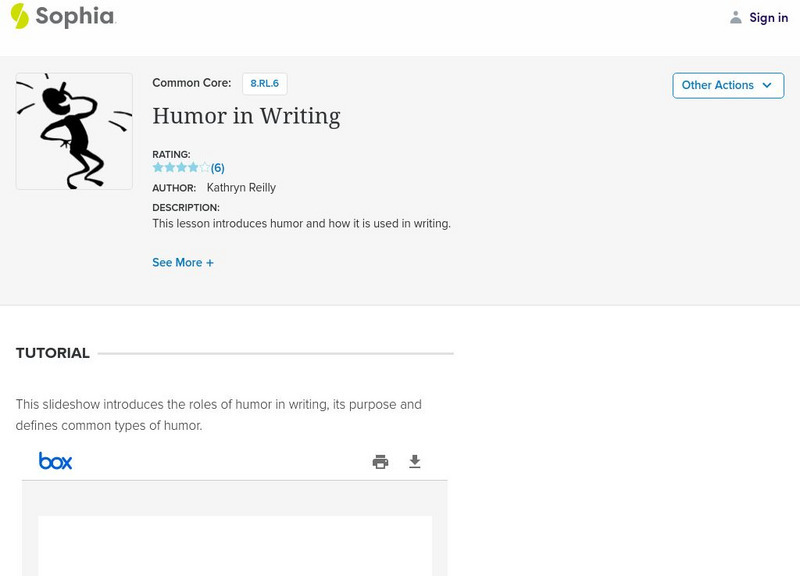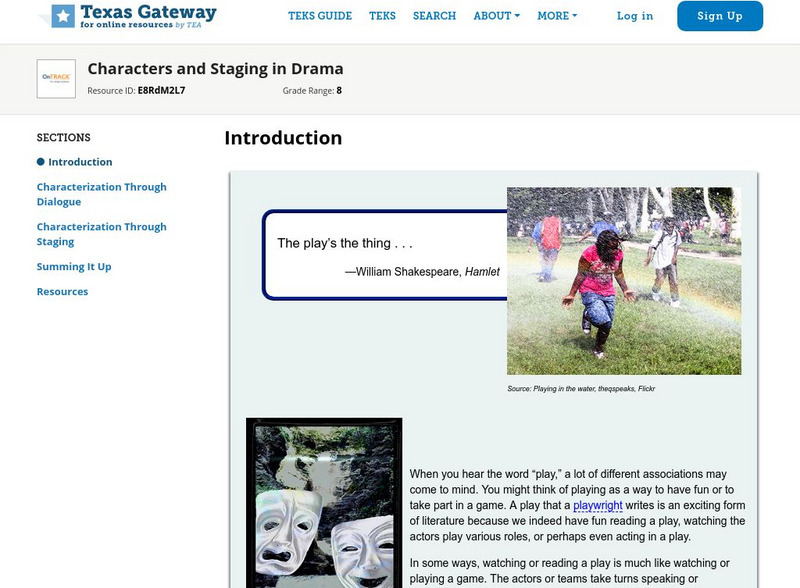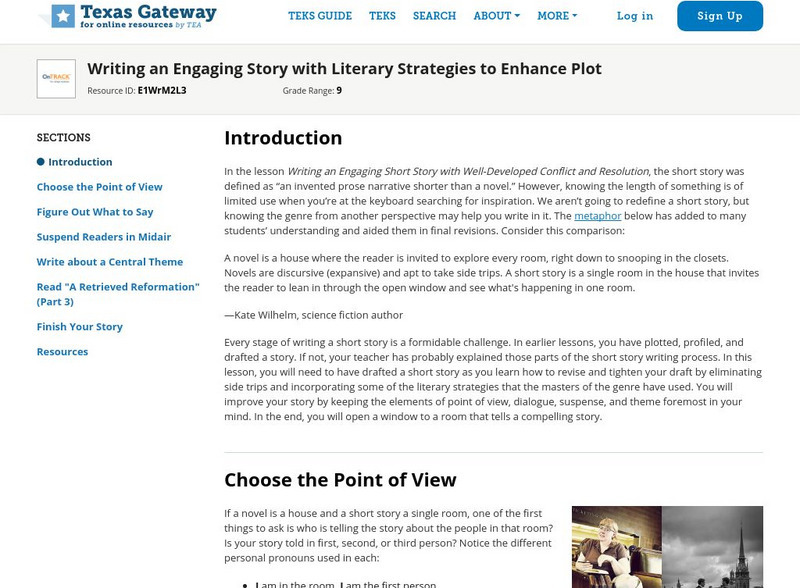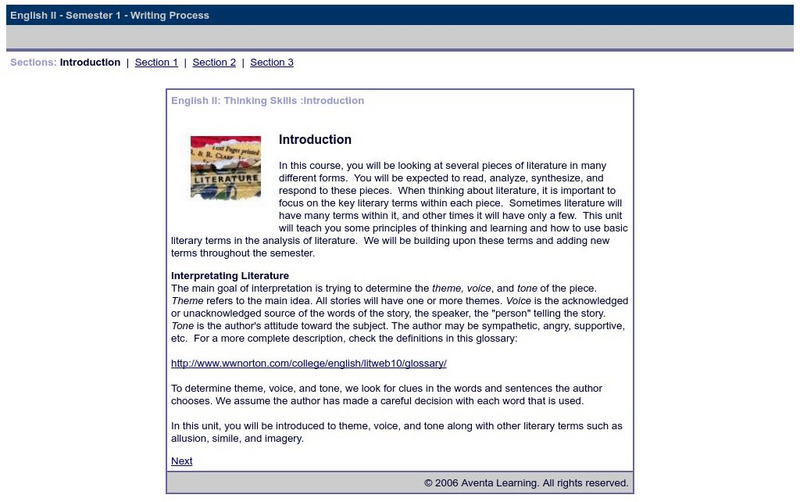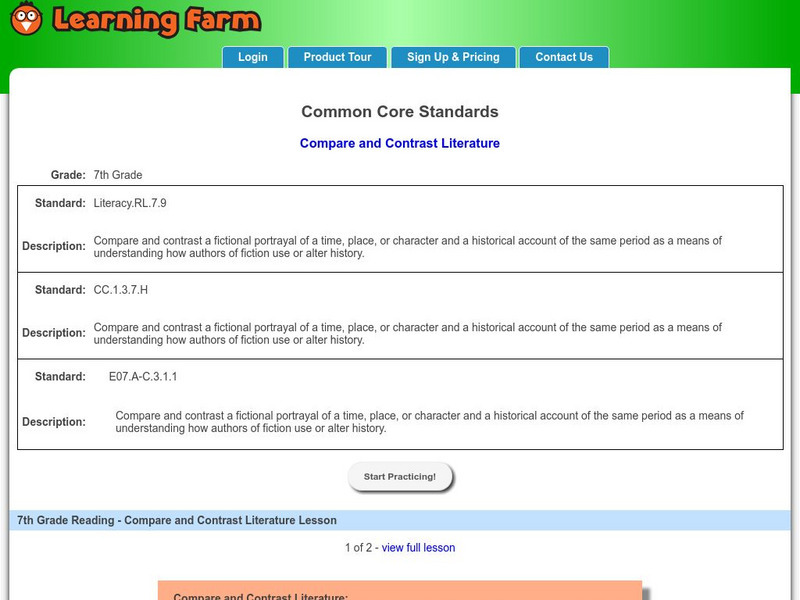Sophia Learning
Sophia: Characterization
This slideshow focuses on characterization including defining and discussing the 5 methods of characterizations: speech, action, description, interaction, and thoughts with examples of each. It also covers the importance of...
Sophia Learning
Sophia: Describing the Mood
Information that can be read or listened to that describes how to identify and write about the mood of a piece. Examples are provided using the story of "Tell Tale Heart" by Edgar Allen Poe.
Sophia Learning
Sophia: Humor in Writing
Eight slides introducing different types of humor in writing including irony, caricature, satire, wit, blunders, hyperbole, jokes, practical jokes, and puns.
Sophia Learning
Sophia: Suspense
This slideshow focuses on the use of suspense in fiction by stating the purpose of suspense, discussing four ways authors create suspense, showing that all forms of literature contain suspense, and presenting an example with John...
Annenberg Foundation
Annenberg Learner: Interactives: Literature: What Makes a Good Short Story?
This interactive exhibit takes learners on a literary journey through the classic short story.
Annenberg Foundation
Annenberg Learner: Literature: Exploring Point of View
Use these brief explanations to help you determine the narrator and point of view in any piece of literature. W.11-12.3a Narratives
Sophia Learning
Sophia: Audience and Writing Style
This slideshow tutorial focuses on adjusting writing style to fit the audience. It looks at audience characteristics and discusses how to adapt the vocabulary, sentence style, and tone to fit them. It provides an example using the topic...
Texas Education Agency
Texas Gateway: Characters and Staging in Drama
Learn how playwrights characterize their protagonists and antagonists through the dialogue and staging of their plays.
Texas Education Agency
Texas Gateway: Analyze Point of View in Literary Texts/fiction
Identify and understand an author's choice of point of view, including limited versus omniscient and subjective versus objective.
Texas Education Agency
Texas Gateway: Analyze the Central Characters in Literary Text/fiction
Learn how the central characters' qualities influence theme and resolution of the central conflict.
Texas Education Agency
Texas Gateway: Review of Dramatic Elements: Practice 4 (English I Reading)
Recognize the functions of monologue, soliloquy, and dramatic irony in a play.
Texas Education Agency
Texas Gateway: Development of Characters Through Literary Devices
Rcognize how literary devices such as character foils can create complex characters in a short story.
Texas Education Agency
Texas Gateway: Writing Engaging Stories With Literary Strategies to Enhance Plot
Use various literary strategies and devices, including dialogue and suspense, to enhance the plot in a short story.
Texas Education Agency
Texas Gateway: Engaging Short Story With Interesting and Believable Characters
Write a short story with interesting and believable characters.
Love To Know Media
Your Dictionary: "Gift of the Magi" Literary Terms
This article focuses on literary terms for the "Gift of the Magi" including the narrator, characters, climax, repetition, resolution, setting, irony, theme, and symbolism.
Department of Defense
Do Dea: Thinking Skills
In this self-guided course, you will be looking at several pieces of literature in many different forms. This unit will teach you some principles of thinking and learning and how to use basic literary terms in the analysis of literature....
TED Talks
Ted: Ted Ed: How to Make Your Writing Suspenseful
Victoria Smith gives some tips for adding suspense to your writing.
Quizlet
Quizlet: Literary Elements/humorous Fiction Terms Test
Literary terms are included in this assessment. This test assesses the following words: allusion, antagonist, dialogue, flashback, imagery, protagonist, symbol, dialect, hyperbole, idiom, irony, parody, pun, sarcasm, understatment, and...
Quizlet
Quizlet: Literary Elements/humorous Fiction Terms Flashcards
Literary elements are included in this review exercise. Flashcards are provided for the following words: allusion, antagonist, dialogue, flashback, imagery, protagonist, symbol, dialect, hyperbole, idiom, irony, parody, pun, sarcasm,...
Other
Ksu: Point of View: First Person Narrator
This tutorial surveys the uses and limitations of first-person narration in literature. CCSS.ELA-Literacy.CCRA.R.9
Learning Farm
Learning Farm: Compare and Contrast Literature
Students will learn how to compare and contrast passages from different time periods. Analyzing the similarities and differences of in the way authors show a historical time, place, or a character gives the reader a broader understanding...
Texas Education Agency
Texas Gateway: Characters and Staging in Drama
[Accessible by TX Educators. Free Registration/Login Required] In this lesson, you will analyze how different playwrights characterize, or develop, their protagonists and antagonists through the dialogue and staging of their plays.
Texas Education Agency
Texas Gateway: Analyze Point of View in Literary Texts/fiction
[Accessible by TX Educators. Free Registration/Login Required] In this lesson, you will learn to identify the primary points of view used in fiction and weigh the advantages and disadvantages of each.
Texas Education Agency
Texas Gateway: Analyze the Central Characters in Literary Text/fiction
In this lesson, you will discover some ways that writers reveal the complexity of their characters. By closely analyzing one author's characters, you'll come to see how their words, actions, and interactions with one another can shape a...



